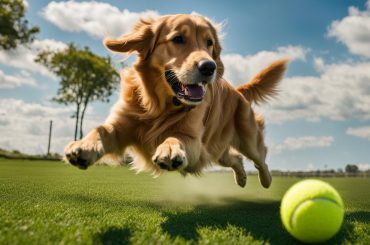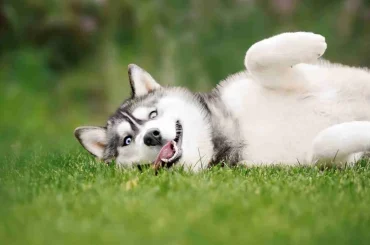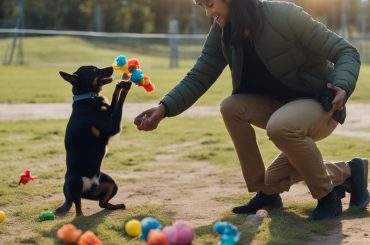Teaching your dog to track scent is not only a fun and engaging activity, but it also helps build trust between you and your furry companion. You don’t have to be a professional trainer or have specialized equipment to start training your dog in scent work. With just a few simple supplies and the right techniques, you can teach your dog to recognize different scents and follow them accurately. In this guide, I’ll outline the steps you need to follow to unlock the world of scent tracking for your pet.
Key Takeaways:
- Scent tracking is a fun and engaging activity that strengthens the bond between you and your dog.
- You don’t need to be a professional trainer or have specialized equipment to teach your dog scent tracking.
- With the right techniques and supplies, you can teach your dog to recognize and follow different scents.
- AKC Scent Work is a popular sport that mimics the task of working detection dogs.
- All dogs have the ability to learn scent work, regardless of their breed.
What Is AKC Scent Work?
AKC Scent Work is a fun and engaging sport that mimics the task of working detection dogs. It involves teaching dogs to locate a specific scent and communicate to the handler when the scent has been found. This activity builds a foundation of trust between the handler and dog, as they work together to solve scent-related challenges.
Scent Work is not limited to military or police dogs; any pet dog can participate and excel in this activity. It taps into their natural sense of smell and allows them to use their instincts in a positive and challenging way. Whether you’re looking to compete in scent work trials or simply teach your dog a new skill, AKC Scent Work provides a rewarding experience for both you and your furry companion.
What Is AKC Scent Work?
| Benefits of AKC Scent Work | |
|---|---|
| 1. | Builds a foundation of trust between handler and dog |
| 2. | Allows dogs to use their natural sense of smell |
| 3. | Engages and challenges dogs mentally and physically |
| 4. | Can be adapted for dogs of all breeds and sizes |
| 5. | Enhances communication and teamwork between handler and dog |
AKC Scent Work provides a platform for dogs to showcase their natural abilities and instincts. It is a rewarding and enjoyable activity that strengthens the bond between you and your canine companion. So, grab your scent supplies and get ready to embark on a scent-filled adventure with your dog!
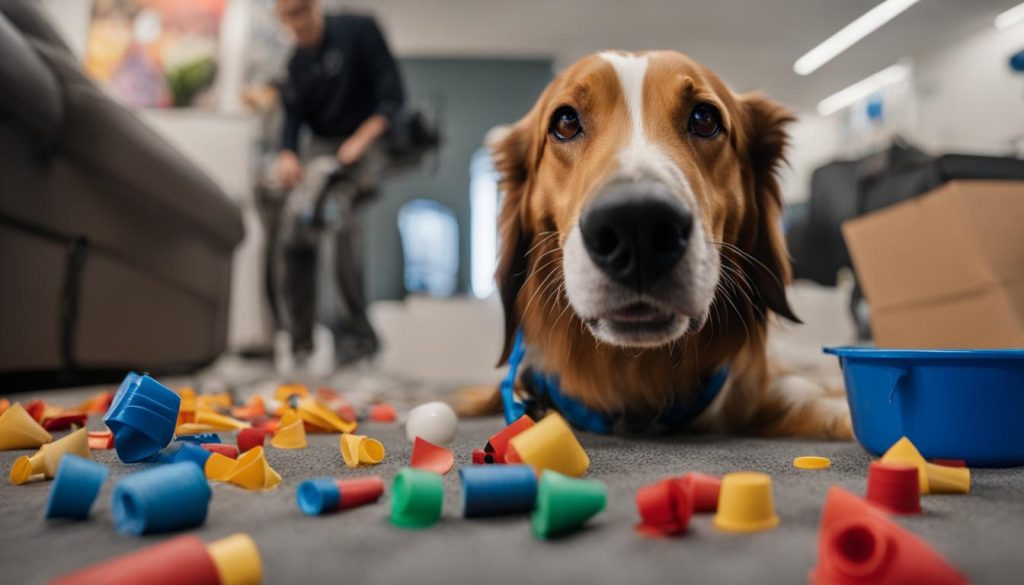
Supplies Needed for Scent Work Training
Before starting scent work training, you’ll need a few supplies. These include Birch essential oil, cotton swabs, tweezers, a scent vessel, disposable gloves, high-value treats, and a plastic container. Birch essential oil is commonly used as a scent in training because dogs respond well to it. The cotton swabs will hold the scent and can be placed in the scent vessel. Tweezers are used to handle the cotton swabs, and disposable gloves ensure that you don’t contaminate the scent. High-value treats are used as rewards during the training sessions. Finally, the plastic container with holes drilled in the lid is used to hold the cotton swabs during training.
| Supplies | Description |
|---|---|
| Birch essential oil | Used as the scent for training |
| Cotton swabs | Hold the scent and go in the scent vessel |
| Tweezers | Handle the cotton swabs without contamination |
| Scent vessel | Holds the cotton swabs during training |
| Disposable gloves | Prevent scent contamination |
| High-value treats | Rewards for the dog during training |
| Plastic container | Holds the scented cotton swabs during training |
Having these supplies ready will ensure a smooth and effective scent work training experience for both you and your dog. I recommend that you have everything prepared and organized before you start the training sessions. This will help you stay focused and provide consistent training for your dog.
Preparing the Odor and Scent Vessel
To prepare the odor for scent work training, we need to ensure that it is tangible and easily recognizable for our dogs. Here’s a step-by-step guide on how to prepare the scent and the vessel:
Step 1: Gather the necessary supplies
Before starting the preparation process, make sure you have all the supplies you need. This includes disposable gloves, essential oil (such as Birch essential oil), and a scent vessel (a glass jar with a tight seal). Having these supplies readily available will make the preparation process smoother.
Step 2: Apply the scent to the cotton swabs
Put on the disposable gloves to avoid contamination and handle the cotton swabs. Apply two drops of the essential oil, such as Birch essential oil, to each half of a cotton swab. This will ensure that the scent is strong and easily detectable by your dog’s nose.
Step 3: Place the scented cotton swabs in the scent vessel
Take the scented cotton swabs and place them in the glass jar or scent vessel. Make sure to seal the jar tightly to prevent any leakage or evaporation of the scent. This will provide a controlled and concentrated source of the scent for your dog to recognize during training.
By following these steps, you can ensure that the scent is properly prepared and ready for training. Try to always use disposable gloves and handle the scent with care to avoid contamination. This will help create a consistent and reliable training environment for your dog.

| Supplies Needed | Steps |
|---|---|
| Disposable gloves | Step 1: Put on the disposable gloves |
| Essential oil (e.g., Birch essential oil) | Step 2: Apply the scent to the cotton swabs |
| Scent vessel (glass jar with a tight seal) | Step 3: Place the scented cotton swabs in the scent vessel |
Introducing Your Dog to Identifying the Scent
Now that you have prepared the scent and scent vessel, it’s time to introduce your dog to identifying the scent. This step is crucial in training your dog to become a proficient scent tracker. By using positive reinforcement and food rewards, you can help your dog develop a strong focus on the scent and recognize it accurately.
To begin, hold a Tin in one hand and a high-value treat in the other, about a foot apart from each other. Encourage your dog to investigate the hand with the Tin by withholding the treat until they show interest in the Tin. As soon as your dog shows interest in the Tin, say “Yes” and reward them by bringing the treat to the hand with the Tin. This process creates an association between the scent and the reward, reinforcing your dog’s recognition of the scent.
Repeat this exercise multiple times, gradually increasing the difficulty by switching the Tin to the other hand. This prevents your dog from relying solely on memory and encourages them to focus on identifying the scent itself. Your dog is ready to progress when they can correctly identify the scent in each hand within a few seconds, three times in a row. This shows that your dog has developed the ability to recognize and differentiate the scent from other distractions.

Try to keep the training sessions positive and enjoyable for your dog. By using food rewards and positive reinforcement, you are creating a fun and engaging experience for both you and your furry companion. This method of introducing the scent sets the foundation for further scent tracking exercises, allowing your dog to build upon their scent recognition skills and become a proficient scent tracker.
Teaching Your Dog to Find the Scent
Now that your dog can identify the scent, it’s time to move on to teaching them how to find it. This step will involve scent tracking exercises that will enhance their scent recognition and tracking abilities. One effective method is to place the Tin holding the scented cotton swab into a plastic container. This will create a more challenging scenario for your dog to practice their tracking skills.
To begin, repeat the same exercise as before, but this time, hold the container in your hand instead of the Tin. Allow your dog to investigate and indicate their recognition of the scent. When they do so, reward them by bringing the high-value treat to the container. This positive reinforcement will reinforce the connection between the scent and the reward, further encouraging your dog to follow the scent trail.
As your dog becomes more proficient in finding the scent in the container, you can gradually increase the difficulty. Start by placing the container in harder-to-find locations within the same room, such as behind furniture or under a table. Then, progress to placing the container on the ground and eventually in a different room. This will simulate real-world scenarios where your dog may need to track a scent over longer distances or in unfamiliar areas.
| Scent Tracking Exercise | Instructions |
|---|---|
| Exercise 1 | Place the container in a slightly hidden location in the same room. |
| Exercise 2 | Hide the container behind furniture or under a table in the same room. |
| Exercise 3 | Move to a different room and hide the container in a slightly hidden location. |
| Exercise 4 | Move to a different room and hide the container behind furniture or under a table. |
By gradually increasing the difficulty of the scent tracking exercises, you will be able to challenge your dog’s scent recognition and tracking abilities. Try to always reward your dog when they successfully find the scent, as this positive reinforcement will motivate them to continue with their scent work training.
![]()
With consistent practice and positive reinforcement, your dog will become proficient in finding scents and following scent trails. This skill can be helpful in various scenarios, such as search and rescue operations or even just finding a lost item in your home. Try to make the training sessions enjoyable for your dog by incorporating play and praise, as this will strengthen the bond between you and your furry companion.
Scent Work Training Tips
When it comes to scent work training, there are several important tips to keep in mind to ensure success. Handling the scent properly is crucial to avoid odor contamination and maintain the integrity of the training. Always wear gloves when handling the scented cotton swabs to prevent any other scents from transferring onto them. Proper disposal of any items that come into contact with the scent is also necessary to prevent cross-contamination.
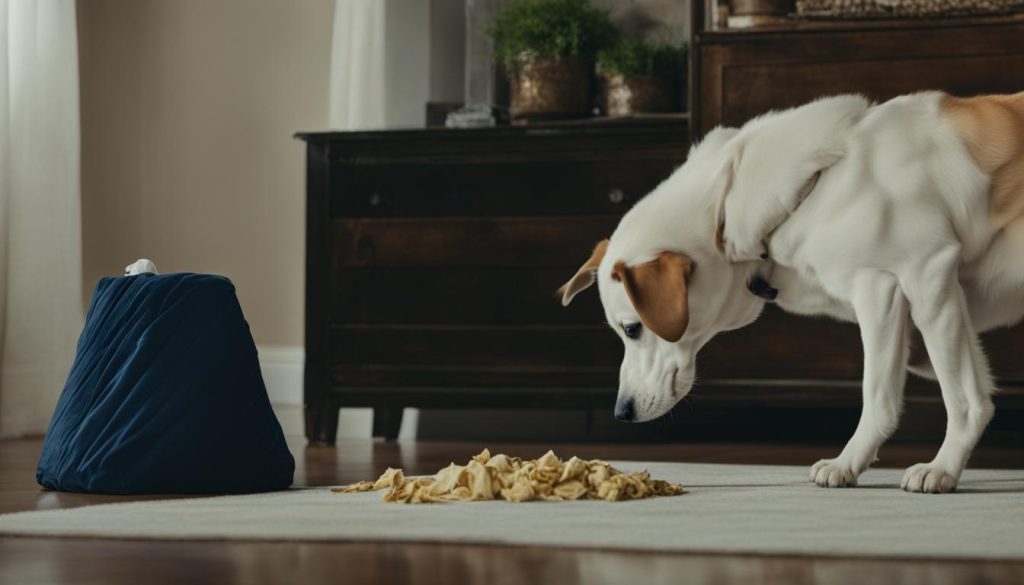
Choosing the right location for your training sessions is another key factor. I recommend that you select a location away from where you’re training to set up the scent, to avoid any odor interference. Using a bathroom with the door closed can work well for this purpose. Additionally, varying the locations and settings for each training session will keep the scent “novel” and prevent familiarization, ensuring that your dog stays focused on the scent and can follow it accurately.
By following these scent work training tips, you can set your dog up for success and create an engaging and effective training experience. Try to handle the scent with care, choose the right location, and keep the training sessions varied. With patience and consistency, your dog will develop their scent tracking skills and enjoy this rewarding activity.
All Dogs Can Learn Scent Work
Teaching dogs to track scent is not limited to specific breeds; all dogs can participate and excel in scent work. While certain breeds, like Beagles and Cocker Spaniels, may have a natural affinity for scent work due to their olfactory abilities, dogs of various breeds can thoroughly enjoy this engaging game. Whether you have a snub-nosed Pug or a hunting dog, scent training can tap into their natural abilities and provide mental stimulation. It’s a great way to bond with your furry companion while channeling their instincts in a positive and challenging activity.
By starting with simple scent recognition exercises and gradually increasing the difficulty, you can witness your dog’s potential in scent tracking. The key is to select motivating scents, use positive reinforcement, and make the training sessions enjoyable. To put it simply, each dog learns at their own pace, so be patient and celebrate their progress along the way. With consistent training and practice, your dog will develop impressive scent tracking skills, regardless of their breed.
“Teaching dogs to track scent is like unlocking their innate superpower. It’s amazing to see how they use their noses to follow a scent trail and find hidden objects. Every dog can participate in scent work and benefit from the mental stimulation and sense of accomplishment it provides.”
Benefits of Scent Training for Dogs
- Engages their natural abilities: Scent work taps into dogs’ natural sense of smell, which is significantly stronger than humans’.
- Mental stimulation: Scent tracking challenges their cognitive skills and provides a mentally stimulating activity.
- Strengthens the bond: Training sessions build trust, communication, and teamwork between you and your dog.
- Reduces boredom and destructive behavior: Scent work provides an outlet for their energy and helps prevent behavioral issues caused by boredom.
- Inclusive and adaptable: It can be customized for dogs of all ages, sizes, and physical abilities.
Scent work is a pretty good way to tap into your dog’s natural abilities, regardless of their breed. It’s an enjoyable game that strengthens the bond between you and your furry friend while providing mental stimulation and a sense of accomplishment. So get ready to embark on this exciting journey with your canine companion and watch them excel in the world of scent tracking!

Training an Effective Scent Tracking Dog
When training a dog to track scents, it is good practice to focus on one specific scent and teach them to ignore any competing scents. By doing so, you can improve their scent tracking abilities and ensure accurate results. Training your dog to focus on one scent requires patience, consistency, and gradual increase in difficulty.
Start by introducing the scent you want your dog to track and reward them for correctly identifying it. This helps them associate the scent with a positive experience, reinforcing their recognition. As your dog progresses, increase the difficulty by introducing distractions or placing the scent in different locations. By gradually exposing them to varied training conditions, you can enhance their ability to track scents in any environment.
During the training process, I would advise that you reinforce the desired behavior with positive rewards such as treats or praise. This helps motivate your dog to stay focused on the target scent and ignore any competing scents. Consistency is key in training an effective scent tracking dog, so be sure to practice regularly and reinforce the skills they have learned.
To put it simply, not all dogs have the same natural abilities when it comes to scent tracking. Some breeds, such as hunting dogs and hounds, may naturally excel at this activity. However, with the right training and techniques, any dog can learn to track scents effectively. Training your dog to be a scent tracker can be a rewarding experience and provide a fun and engaging activity for both of you to enjoy.
![]()
| Training Tips | Benefits |
|---|---|
| Focus on one scent | Improves accuracy and reduces distractions |
| Ignore competing scents | Ensures dogs stay on track and follow the desired scent |
| Varied training conditions | Enhances adaptability and ability to track scents in different environments |
Final Thoughts
Teaching your dog to track scent is not only a practical skill but also an engaging and enjoyable activity that can strengthen the bond between you and your furry companion. By following the steps outlined in this guide, you can develop your dog’s scent tracking skills and unlock their natural abilities.
Scent work is not limited to specific breeds or working dogs. Any dog can participate in this activity and excel in their own unique way. Whether you have a Beagle with a keen sense of smell or a Pug with a snub nose, scent tracking can be a rewarding experience for both you and your four-legged friend.
Engaging in scent work builds trust between you and your dog as you work together as a team. It requires patience, consistency, and positive reinforcement. Celebrate your dog’s progress along the way, and remember to keep the training sessions fun and engaging.
In conclusion, scent tracking is a valuable skill that not only taps into your dog’s natural abilities but also provides mental stimulation and strengthens your bond. So grab your supplies, follow the steps in this guide, and enjoy the thrilling world of scent tracking with your canine companion!
FAQ
Can any dog participate in scent work training?
Yes, any breed of dog can participate in scent work training. While some breeds may have a natural affinity for scent work, all dogs have the ability to learn and enjoy this activity.
What supplies do I need for scent work training?
You will need Birch essential oil, cotton swabs, tweezers, a scent vessel, disposable gloves, high-value treats, and a plastic container with holes drilled in the lid.
How do I prepare the odor for scent work training?
Apply two drops of Birch essential oil to each half of a cotton swab, place the scented cotton swabs in a glass jar, and seal it tightly. Use disposable gloves when handling the cotton swabs to avoid contamination.
How do I introduce my dog to identifying the scent?
Hold a Tin in one hand and a high-value treat in the other, about a foot apart. Encourage your dog to investigate the hand with the Tin, and reward them when they show interest in it. Repeat this exercise until your dog can correctly identify the scent in each hand within a few seconds, three times in a row.
How do I teach my dog to find the scent?
Place the Tin holding the scented cotton swab into a plastic container. Hold the container in your hand and wait for your dog to indicate their recognition of the scent. Reward them when they find the scent in the container. Gradually increase the difficulty by placing the container in different locations.
What are some scent work training tips?
Always wear gloves when handling the scent to avoid odor contamination. Dispose of any items that come in contact with the scented cotton swab. Choose a location away from where you’re training to set up the scent to avoid odor interference. Vary the locations and settings for each training session to keep the scent “novel” and engaging for your dog.
Can all dogs learn scent work?
Yes, all dogs have the ability to learn scent work, regardless of their breed. While some breeds may have natural abilities for scent work, any dog can participate and excel in this enjoyable game.
How do I train an effective scent tracking dog?
Gradually increase the difficulty of the scent trails and expose your dog to a variety of training conditions. Conduct training sessions in different weather conditions and on various terrains to enhance your dog’s scent tracing skills. Consistency, positive reinforcement, and frequent practice sessions are key to reinforcing the skills.



